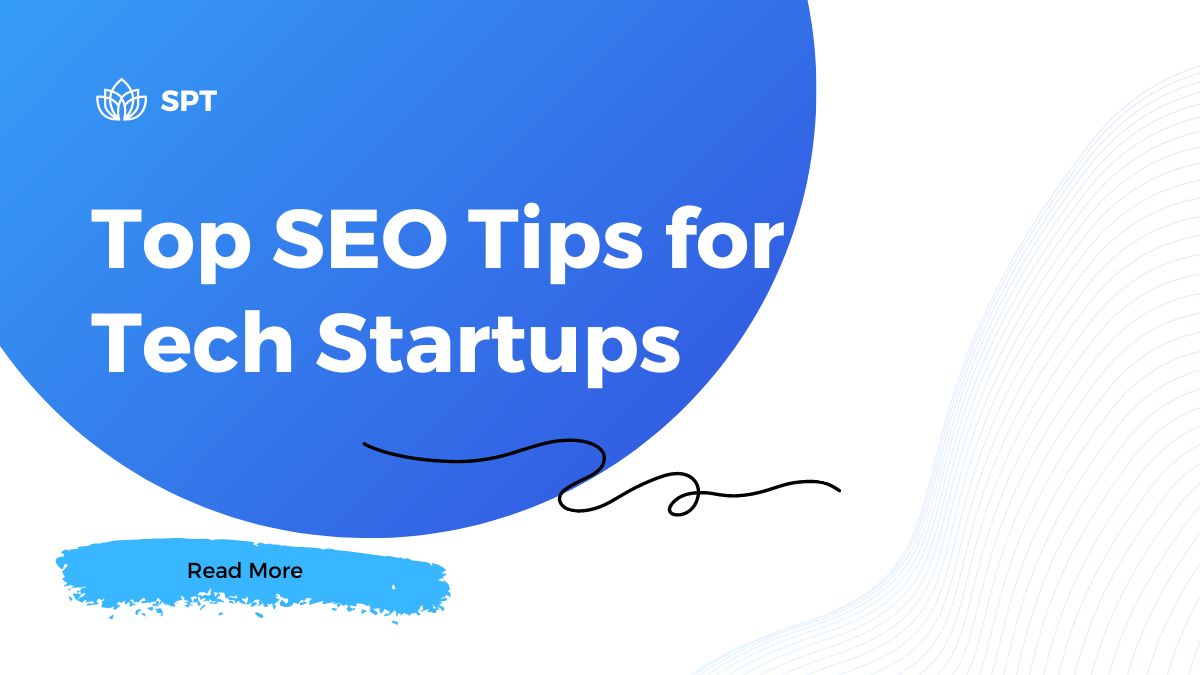
In the fast-paced world of tech startups, a strong online presence is critical. It helps attract customers, investors, and partners. SEO is critical for increasing your website’s visibility on search engines. It drives organic traffic and helps your startup grow. This guide is full of top SEO tips. They are tailored for tech startups. They will help you to maximize your online reach and meet your business goals.
1. Understand Your Audience and Niche
Identify Your Target Audience
The first step in any successful SEO strategy is to identify your target audience. As a tech startup, you must find your ideal customers. You must find their pain points and the solutions they want. Create detailed buyer personas to help you tailor your content and SEO strategies more effectively.
Analyze Your Competitors
Conduct an in-depth analysis of your competitors to determine their strengths and weaknesses. Determine the keywords they are targeting, the type of content they create, and the backlinks they have received. Use tools such as Ahrefs, SEMrush, and Moz to gather competitive insights that can help you plan your SEO strategy.
2. Conduct Comprehensive Keyword Research
Importance of Keyword Research
Keyword research is the cornerstone of any successful SEO strategy. It means finding the search terms and phrases. Your target audience uses them to find products or services like yours. Targeting the right keywords boosts your chances. You’ll rank higher in search results (SERPs).
Tools for Keyword Research
Use keyword research tools. These include Google Keyword Planner, Ahrefs, SEMrush, and Ubersuggest. Use them to find keywords for your tech startup. Look for short-tail keywords (e.g., “cloud computing”) and long-tail keywords (e.g., “best cloud computing solutions for small businesses”). These will help you reach a large and specific audience.
Incorporate Keywords Naturally
Once you have found your target keywords, put them into your website content smoothly. Focus on including keywords in the following areas:
- Title Tags: Craft engaging and keyword-rich titles for your pages and posts.
- Headings: Use keywords in H1, H2, and H3 tags to structure your content effectively.
- Meta Descriptions: Write compelling meta descriptions that include your primary keyword.
- Content: Integrate keywords naturally throughout your content without keyword stuffing.
- Alt Text: Use keywords in image alt text to enhance your chances of ranking in image search results.
3. Optimize Your Website for SEO
On-Page SEO Best Practices
On-page SEO means optimizing individual web pages. The goal is to rank higher and get more relevant traffic. Here are some key on-page SEO best practices:
- High-Quality Content: Create informative, engaging, and valuable content that addresses your audience’s needs and questions.
- SEO-Friendly URLs: Use short, descriptive, and keyword-rich URLs. Avoid using numbers or special characters.
- Internal Linking: Use internal links to connect related pages on your website, improving navigation and user experience.
- Mobile Optimization: Ensure your website is mobile-friendly and responsive, as a significant portion of web traffic comes from mobile devices.
- Page Load Speed: Optimize your website’s load speed by compressing images, leveraging browser caching, and minimizing HTTP requests.
Technical SEO
Technical SEO involves improving your website’s backend. This is to make it easier for search engines to crawl and index. Here are some key technical SEO tips:
- XML Sitemap: Create and submit an XML sitemap to search engines to help them understand your website’s structure.
- Robots.txt File: Use a robots.txt file to guide search engines on which pages to crawl and index.
- Secure Website: Ensure your website uses HTTPS for secure and encrypted connections.
- Fix Broken Links: Regularly check for and fix broken links on your website to improve user experience and SEO.
- Schema Markup: Implement schema markup to enhance your search listings with rich snippets, improving click-through rates.
4. Create High-Quality, Engaging Content
Content is King
Content is a critical component of SEO. Creating top-notch, engaging content adds value to your audience. It can help you attract and keep visitors. It can also help you earn backlinks and boost your search rankings.
Types of Content
Diversify your content to appeal to different segments of your audience. Here are some content types that can benefit tech startups:
- Blog Posts: Write informative and insightful blog posts on industry trends, how-to guides, and product updates.
- Case Studies: Showcase successful projects and customer stories to build credibility and trust.
- Whitepapers and Ebooks: Provide in-depth knowledge on specific topics to establish your expertise and generate leads.
- Videos and Webinars: Create engaging video content and host webinars to connect with your audience on a personal level.
- Infographics: Use visually appealing infographics to present complex information in an easy-to-understand format.
Content Promotion
Promote your content through various channels to increase its reach and impact. Share your content on social media, email newsletters, and relevant online communities. Collaborate with influencers and industry experts to amplify your content’s visibility.
5. Build High-Quality Backlinks
Importance of Backlinks
Backlinks are one of the most important ranking factors for SEO. Reputable sites give high-quality backlinks. They signal to search engines that your content is valuable and trustworthy.
Strategies for Building Backlinks
- Guest Blogging: Write guest posts for authoritative blogs and websites in your industry. Include links back to your site.
- Content Partnerships: Collaborate with other businesses and influencers to create and share content that includes mutual backlinks.
- Resource Link Building: Create valuable resources, such as industry reports or comprehensive guides, and reach out to relevant websites to link to your content.
- Social Media and PR: Promote your content on social media and engage in PR activities to attract natural backlinks.
6. Utilize Local SEO
Importance of Local SEO
If your tech startup has a physical location or serves specific areas, local SEO can help you attract local customers. It can also improve your search rankings.
Local SEO Strategies
- Google My Business: Create and optimize your Google My Business profile with accurate business information, photos, and customer reviews.
- Local Keywords: Include local keywords in your website content, meta tags, and business listings.
- NAP Consistency: Ensure your business name, address, and phone number (NAP) are consistent across all online listings and directories.
- Local Backlinks: Acquire backlinks from local websites, such as local news sites, community organizations, and business directories.
7. Monitor and Analyze Performance
Importance of Analytics
You need to monitor your SEO. It’s key to know what works and what needs improvement. Use tools like Google Analytics and Google Search Console. Also, use third-party SEO tools to track key metrics.
Key Metrics to Monitor
- Organic Traffic: Measure the number of visitors coming from organic search.
- Bounce Rate: Monitor the percentage of visitors who leave your site after viewing only one page.
- Average Session Duration: Measure how long visitors stay on your site.
- Pages Per Session: Track the number of pages viewed per session.
- Keyword Rankings: Track the performance of your target keywords in search results.
- Backlink Profile: Monitor the quality and quantity of backlinks pointing to your site.
Making Data-driven Decisions
Make data-driven decisions based on the insights you gained from analytics. Identify high-performing content and investigate what makes it effective. Instead, look for underperforming pages and optimize them based on your findings.
Conclusion
Tech startups need a strong SEO strategy. It is essential for them to establish an online presence and attract a specific audience. Knowing your target audience and doing much keyword research can boost your search engine rankings. It can also drive traffic to your site. You can also do this by improving your website and content. You can also build high-quality backlinks. Use local SEO and keep monitoring your performance.
Remember, SEO is ongoing. It needs regular monitoring and adaptation to changing search algorithms and market trends. Keep current on the latest SEO best practices. Always refine your strategy. Do this to ensure your tech startup’s long-term success and growth.




